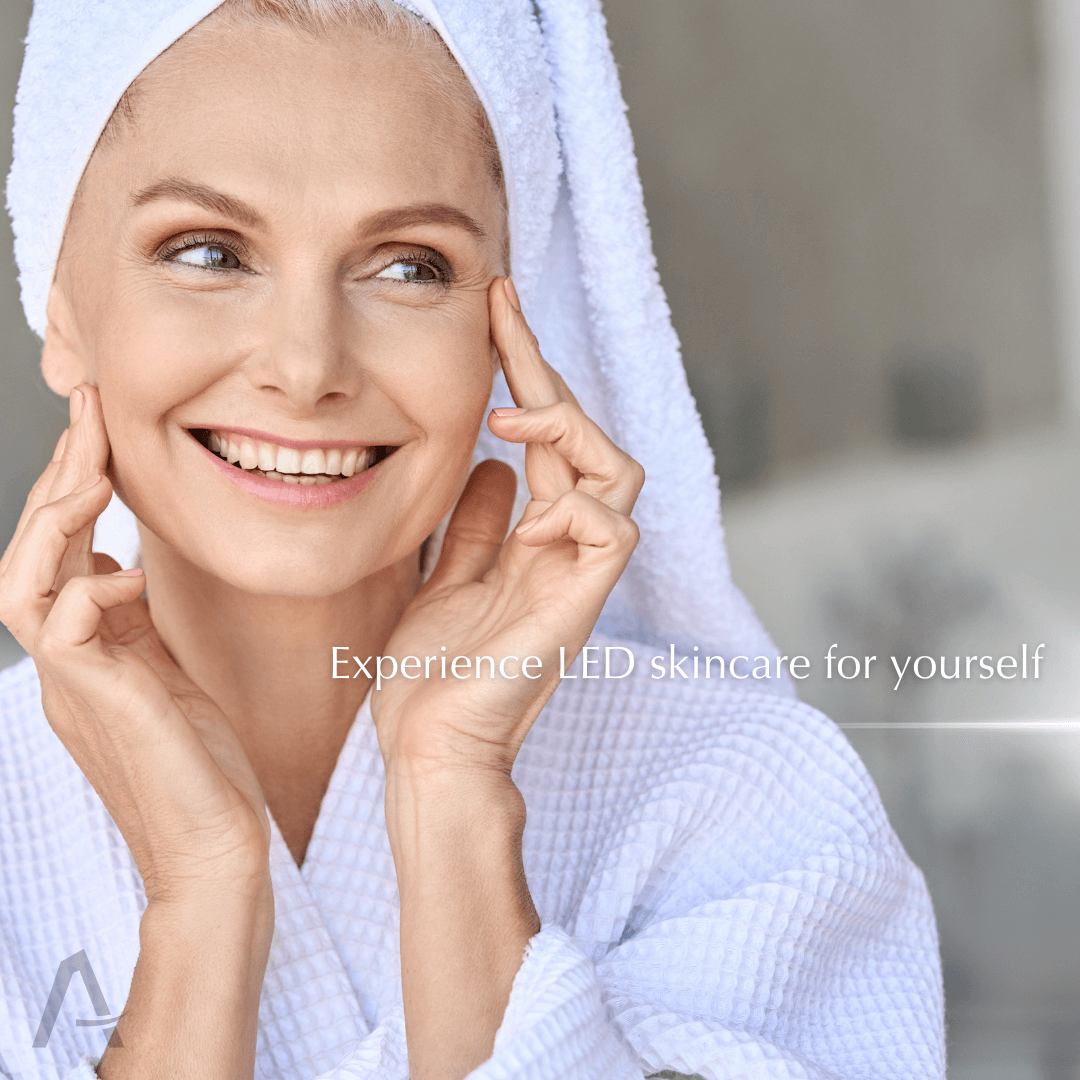The Spectrum of Light Therapies for Skin Health
Red Light Therapy:
When diving into the world of skincare, red light stands out as a master of rejuvenation. Its power lies in stimulating collagen and elastin production, which naturally plumps up the skin, diminishing those pesky wrinkles and fine lines. Moreover, if scars or blemishes have always been a concern, the red light aids the skin's natural healing process, accelerating cellular turnover, and over time, making those marks less visible.
Blue Light Therapy:
If battling acne has been a constant struggle, introducing blue light therapy might be the game-changer you've been waiting for. It's particularly adept at targeting and eliminating acne-causing bacteria, paving the way for clearer skin. And that's not all — with regular use, it works wonders in refining the skin texture by reducing the appearance of enlarged pores.
Near-Infrared (NIR) Light Therapy:
Delving deeper into the skin's layers is the NIR light therapy. It reaches where other lights can't, fostering cell regeneration and dramatically cutting down inflammation. Additionally, its role in promoting better blood circulation can't be understated. By ensuring every skin cell receives essential nutrients, NIR bestows a vibrant, healthy glow.
Yellow Light Therapy:
Skincare enthusiasts might not be as familiar with yellow light, but its benefits are noteworthy. It's particularly skilled at stimulating the lymphatic system, which can be a lifesaver for those facing issues with puffiness or water retention. And the revitalizing aspect? Well, regular yellow light sessions can transform the skin, evening out the tone and boosting overall radiance.
Green Light Therapy:
Combatting hyperpigmentation is no easy feat, but green light therapy rises to the challenge. By specifically targeting melanocytes, it reduces melanin production, gradually brightening the complexion. And for those with sensitive or easily irritated skin, green light offers solace with its soothing properties, effectively diminishing redness.
Cyan Light Therapy:
Imagine a day out in the sun that left the skin feeling burnt and inflamed. Enter cyan light therapy — a balm for such issues. Its properties are unparalleled in reducing skin irritation, and it's a comfort for sunburned skin. Furthermore, by keeping sebaceous gland activity in check, it plays a pivotal role in maintaining the skin's oil balance, ensuring it's neither too dry nor excessively oily.
Amber Light Therapy:
The quest for firmer, youthful skin leads us to amber light therapy. Known for its prowess in stimulating elastin fibers, it's essential for preserving the skin's elasticity. Over time, the skin feels firmer and more supple. Additionally, if dullness has been a persistent issue, amber light shines through, literally and figuratively, making the skin appear luminous and full of life.
Each color offers a spectrum of benefits, making light therapy a holistic skincare solution. The combination of these colors can cater to a wide range of skincare needs, making it a must-have for anyone serious about their skin health.
Why Every Home Should Consider Owning a Light Therapy Device
In today's fast-paced world, skincare often takes a backseat. However, with light therapy devices, achieving radiant and healthy skin becomes effortless and efficient. Here's why every individual should consider investing in at least one:
- Versatility: A single device can address multiple skin concerns – from acne to aging. Instead of purchasing numerous creams and serums, one light therapy tool can cater to a variety of needs.
- Cost-Effective: Over time, owning a light therapy device can be more economical than regular spa visits or purchasing multiple skincare products. It's a one-time investment with enduring benefits.
- Convenience: You don't have to set a spa appointment or wait for a product to arrive. Whenever you feel your skin needs a boost, the device is at your disposal.
- Safety: These devices, especially when FDA-cleared, offer a non-invasive approach to skincare. There's no risk of allergic reactions like some topical products, and they're generally safe for all skin types.
- Scientifically Backed: Unlike many beauty fads, the benefits of light therapy are well-documented in scientific literature. It's a blend of beauty and science.
- Natural Approach: Light therapy promotes the body's own healing mechanisms. There are no chemicals, no needles, just pure, rejuvenating light.
- Consistent Results: Regular use of light therapy offers consistent and cumulative results. Over time, users often find they're less reliant on makeup to achieve a glowing complexion.
In essence, owning a light therapy device is like having a personal skincare specialist at home. It's a game-changer in the realm of beauty and wellness, empowering individuals to take charge of their skin health proactively.
Sources:
Avci, P., Gupta, A., Sadasivam, M., Vecchio, D., Pam, Z., & Hamblin, M. R. (2013). Low-level laser (light) therapy (LLLT) in skin: stimulating, healing, restoring. Seminars in cutaneous medicine and surgery, 32(1), 41-52.
Hamblin, M. R. (2017). Mechanisms and applications of the anti-inflammatory effects of photobiomodulation. AIMS Biophysics, 4(3), 337-361.
Huang, Y. Y., Sharma, S. K., Carroll, J., & Hamblin, M. R. (2011). Biphasic dose response in low-level light therapy. Dose‐Response, 9(4), 602-618.
Kim, W. S., Calderhead, R. G., & Park, J. H. (2011). A review of the efficacy of light therapy for wound healing. Dermatologic Surgery, 37(3), 384-393.




Leave a comment
This site is protected by hCaptcha and the hCaptcha Privacy Policy and Terms of Service apply.